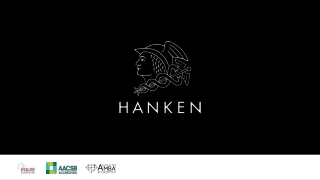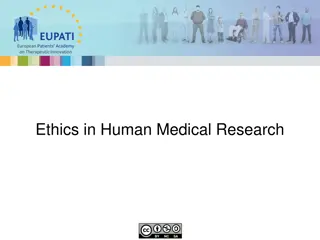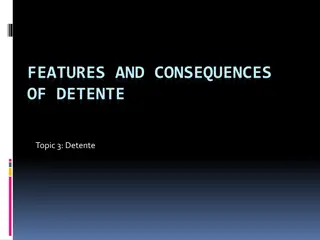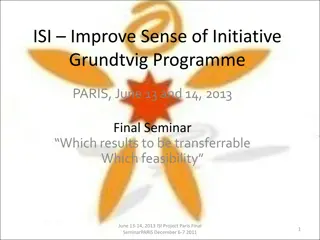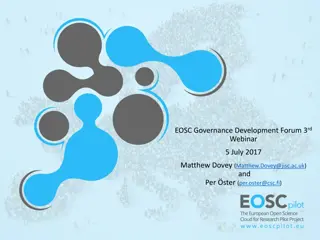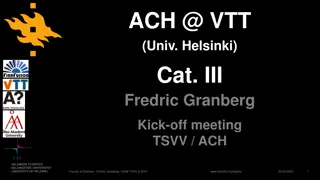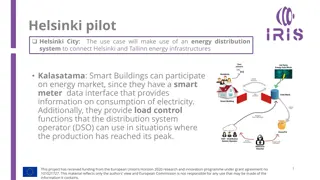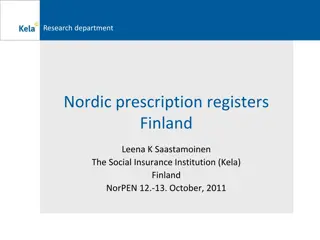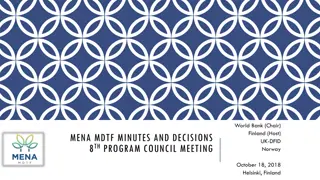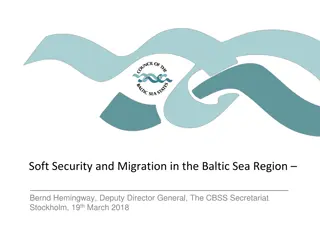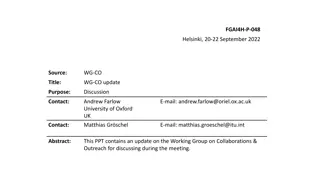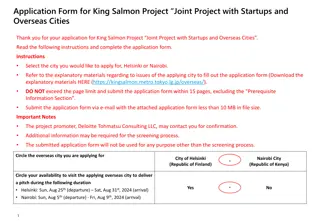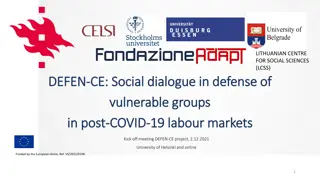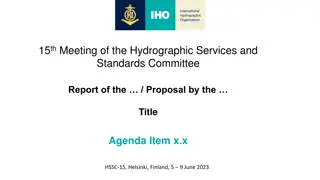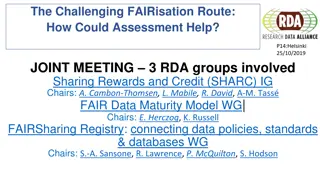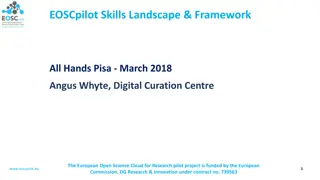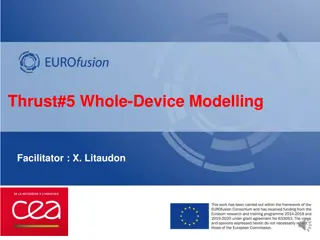
Competence and Competence-Based Approaches in Education
Exploring the concept of competence across various scientific disciplines, the elements of competences, and the competence revolution in educational policy since the 1990s. Competencies are defined as clusters of knowledge, skills, and attitudes that correlate with job performance and can be improved through training and education. The shift towards promoting competencies reflects a societal emphasis on democratic accountability, lifelong learning, and blurring boundaries between formal and informal education.
Download Presentation

Please find below an Image/Link to download the presentation.
The content on the website is provided AS IS for your information and personal use only. It may not be sold, licensed, or shared on other websites without obtaining consent from the author. If you encounter any issues during the download, it is possible that the publisher has removed the file from their server.
You are allowed to download the files provided on this website for personal or commercial use, subject to the condition that they are used lawfully. All files are the property of their respective owners.
The content on the website is provided AS IS for your information and personal use only. It may not be sold, licensed, or shared on other websites without obtaining consent from the author.
E N D
Presentation Transcript
Competence frameworks and competence-based approaches in youth worker education and training Helsinki 21.9.2022 4.4.2025 Tomi Kiilakoski 1 Tomi Kiilakoski Tomi Kiilakoski
On the concept of competence The concept of competence is used in different scientific traditions, such as psychology, educational sciences, sociology, nursing studies and management studies. It has been estimated that the term s very popularity across these differing domains results in its being used in different ways, with different and sometimes conflicting meanings and intentions (Glaesser 2019, 70). It has also been described as a nebulous concept , and it has been claimed that despite continuous efforts to define the term it continues to suffer from substantial conceptual confusion (Telling & Serapioni 2019). 2
What are the elements of competences A popular definition assumes that competencies are clusters of knowledge, skills and attitudes that correlate with perfomance on the job, that can be measured against accepted standards and that can be improved via training and education. This is called KSA model, which sees competences as constisting of these three catogories. (Hsieh & al. 2012.) In the recommendation on lifelong learning competences the Comission follows the above description and defines competences as a combination of knowledge, skills and attitudes. Knowledge, according to the recommendation, is composed of facts and figures, concepts, ideas theories which already exist. Skills are seen as an ability to carry out processes and use the existing knowledge to achieve results. Attitudes describe dispositions and mind-sets to act or react to ideas, persons and situations. (Council of European Union 2018.) The Council of Europe s Reference Framework for Democratic Competences is based on four categories: values; skills; attitudes; knowledge and critical understanding. ; According to OECD, the concept of competency implies more than just the acquisition of knowledge and skills; it involves the mobilisation of knowledge, skills, attitudes and values to meet complex demands (OECD 2018, 4). 3
Competence revolution It has been estimated that the use of the term competence has become widespread in educational policy since the early 1990s. It has been claimed that policies promoting competencies were based on powerful societal ideas, such as democratic accountability, anti-academic elitism and the recognition that many important societal practices rely on people actually doing things rather than reciting propositional knowledge in one form or another (Halliday 2004, 579). It has been claimed that the emphasis on competences in educational policy in Europe and globally is based on the discourse on the knowledge society and lifelong and lifewide learning. This in turn emphasises policy interconnectedness and blurring boundaries between formal and informal learning. (Caena 2014.)Therefore, focusing only on formal learning and qualifications is not be enough to understand the full scope of learning outcomes (Bohlinger 2012). 4
European youth policy developments In the EU white paper, New Impetus for the European youth, competences were already briefly mentioned. The paper called for improving the systems for transferring and recognising occupational skills and competencies between Member States (European Comission 2001, 44). The Council of the Europian Union recommendation on the mobility of young volunteers across the European Union also noted that voluntary activities constitute a rich experience in a non-formal educational and informal learning context which enhances young people's professional skills and competences, contributes to their employability and sense of solidarity, develops their social skills, smoothes their integration into society and fosters active citizenship (2008/C 319/03). Youth Pass and key competences developed in 2006. 5
Youth work and competences The Declaration of the Second European Youth Work Convention in 2015: [t]here needs to be a core framework of quality standards for youth work responsive to national contexts, including competence models for youth workers, and accreditation systems for prior experience and learning . The Council of Europe Recommendation from 2017 called for establishing a coherent and flexible competency-based framework for the education and training of paid and volunteer youth workers that takes into account existing practice, new trends and arenas, as well as the diversity of youth work (Council of Europe 2017). 6
Youth work and competences Conclusions of the Council and of the Representatives of the Governments of the Member States meeting within the Council on education and training of youth workers (2019) Member states are invited to Create a competence-based framework for formal and non-formal youth work education and training which is sensitive to the differences in training needs of employed/paid youth workers, those wishing to pursue a career in youth work and volunteer youth workers and youth leaders, which relies on peer-learning and uses digital learning and other innovative methods. Resolution of the Council and of the Representatives of the Governments of the Member States meeting within the Council on the Framework for establishing a European Youth Work Agenda (2020) Aim to Enhance understanding of the concepts, methods and tools used for education and training in youth work, further develop competence-based frameworks for formal and non-formal youth work education and training, where applicable and provide the various actors involved in youth work with sufficient quality education, training, guidance and support. 7
Research questions 1. What are the contents of different competence descriptions? How are competences understood? 2. Are youth work competence frameworks competence structures or competence levels models? Are they detailed (spesific) or do they describe general statements (universal)? 3. How can competences be evaluated and what are the criteria for doing so? Are there policy processes to evaluate competences of youth workers, and if there are, how has the policy process evolved? 4. What is known about the competence frameworks of formal youth work education? Is there a connection between these competences and other competence descriptions of youth work, such as ones used in designing training? 8
Finland: two different competence frameworks in formal education Higher education (Humak Curriculum) Vocational education (VET) Community. Students learn to work in various diverse communities from the outset of the programme. Professional encounters, education and instruction (15 competence points) Instruction of the individual, groups and community (35 competence points) Promoting the growth and wellbeing of young people (30 competence points Support and social empowerment for inclusion (30 competence points). Pedagogical. Students are introduced to phenomena related to the guidance, education and development of individuals, groups and communities. Social. Students develop an understanding of social diversity and strengthen their competencies in encountering different cultures. Development competence. Students will be able to recognise development needs in work practices and operational structures and find and justify solutions.
Georgia There is no competency framework in the country. So, Council of Europe's Youth Work Portfolio was used as a competence framework to design a Youth workers' certification course. According to Georgian legislation, a framework document of a European and / or any EU member state could be used as a model, if there is no similar document in the country. 10
Germany the Qualifikationsprofil Jugendarbeit : Operational competences pedagogical-professional participation , shaping educational areas and processes , being a reliable confidante , and creating professional co-operation . action, sub-divided into facilitating Personal competences subdivided into mastering challenges competently , organising day- to-day work independently , demonstrating social competence , being able to position oneself , being ready to constantly learn something new , and acting responsibly . 11
Germany Professional self-identity 3.1 professional identity, subdivided into identification with youth work and developing a professional understandingof roles . 3.2 pedagogical approach, subdivided into embodying basic pedagogical principles , having critical sympathy for children and adolescents , getting involved as a person , positive attitude towards the resistant and the unexpected , and reflecting on their own professional action . Scientific and theoretical basis subdivided into specific knowledge about youth work and social work , key perspectives and findings of the related disciplines , structural knowledge , scientific and theoretical reference in their own work , legal prerequisites , and socio-political framework conditions and developments . qualification profile: https://www.agjb.de/wp- content/uploads/2019/06/WEB_hsk_broschuere_qualifikationsprofil_181114.pdf 12
Ireland According to NSETS Professional Endorsement, National Occupational Standards seek to capture and define the skills, knowledge and competences used within a work sector and form an agreed set of aspects, units and elements that are used to describe the quintessential characteristics of youth work (NSETS 2013, 10). In the documentation of National Occupational Standards for youth work, the explicit aim to define the competencies required to carry out the functions carried out by the youth work workforce. The NOS are intended to describe the competencies required to fulfil the tasks required in the youth sector. (National Youth Agency 2020, Appendix 1. 1.) There are 26 different functions. Performance criteria and knowledge and understanding required to succesfully complete the function is offered. YW 10 (Advocate with and on behalf of young people so that their interests are represented) is about supporting young people to develop their communication skills to represent their views and values and those of their peers, to others. It also includes identifying what the needs and interests of individuals or groups of young people are and presenting their needs and interests accurately and fairly . Thirteen different performance criteria are described, and 18 points for knowledge and understanding are described. 13
Portugal The Main tool for describing competences of youth work in Portugal is Recognition, Validation and Certification of Skills for Youth Worker, which aims at allowing people who work in the youth field to acquire the certification of T cnico de Juventude. The training curriculum consists of the following modules 1) Youth Worker contexts and practices (25h) 2) Youth Cultures - young people today (25h 3) Methods and tools for participation and action with young people (25h) 4) Youth Associations and citizenship (25h) 5) Management of Youth Associations (50h) 6) Methodology of youth work through sport (25h) 7) Non-Formal Education Methods and Techniques (50h) 8) Youth Volunteering (25h) 9) Opportunities for young people (50h) 10) Youth Information national and international contexts and practices (25h) 11) Prevention and intervention with young people (50h) 12) Youth Policies in Portugal (25h) 13) Youth Policies in the world and international relations (25h) 14) Education and cooperation for development in the youth field (25h) 15) Animation and Coordination of Summer Camps (50h). 14
Conclusions Firstly, earlier mapping studies have analysed that not all the countries, such as Finland or Germany, have national level competence descriptions. While this still holds true, closer examination reveals that in both countries there are processes and documents which offer competence descriptions. Secondly, based on the examples in this study the practice architectures of youth work also affect how competence descriptions can be developed. To express this in a simplified manner, the more youth work support structures there are in the country, the more complex the issue of competences is likely to be. Thirdly and more broadly, the concept of competence has been critised for being elusive. This is true to youth work competencies as well. 15
Conclusions There are different stakeholders involved in the process. There is some extent of horizontal consistency in the examined competence frameworks. They all deal with working with young people as individuals and with groups. They talk about pedagogical competences or skills. However, the competence frameworks examined do not share a common basis. Echoing earlier comparative research on 21stcentury competences, it can be said that consistency in the content is obscured by the use of different grouping and categorising procedures, as well as differences in terminology chosen (Voogt & Roblin 2012, 315). The majority of the competence frameworks are competence structures models. Competence levels model are rare. The models for volunteers in Ireland and in Germany are different from professional frameworks. Evaluating competences differs. Some of the models are recognised and regulated whereas some models are more tools for helping the organisations themselves to be active. 16
Problems identified in the study Conceptual challenge. Content challenge. Firstly, the number of competences described varies. Some of the models are broken down into detailed operations while others remain rather general. Secondly, competence frameworks studied are far from identical. They are, in some cases, expressed in different terms, but more fundamental issue deals with different theoretical ideas on what youth workers should be able to do. Policy challenges. Structures vs. levels challenge 17
Thank you. Tomi Kiilakoski Senior Researcher, Finnish Youth Research Network; Adjunct Professor, University of Tampere tomi.kiilakoski@youthresearch.fi 4.4.2025 Tomi Kiilakoski 18


